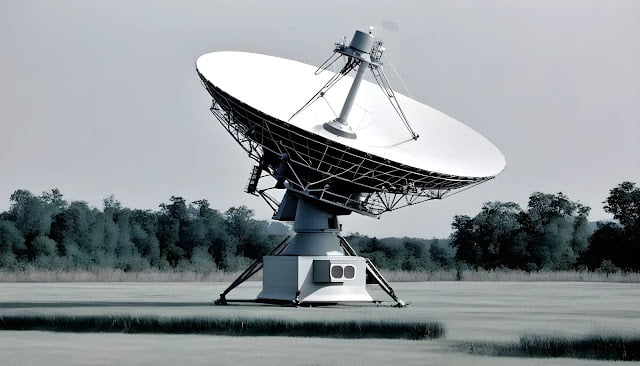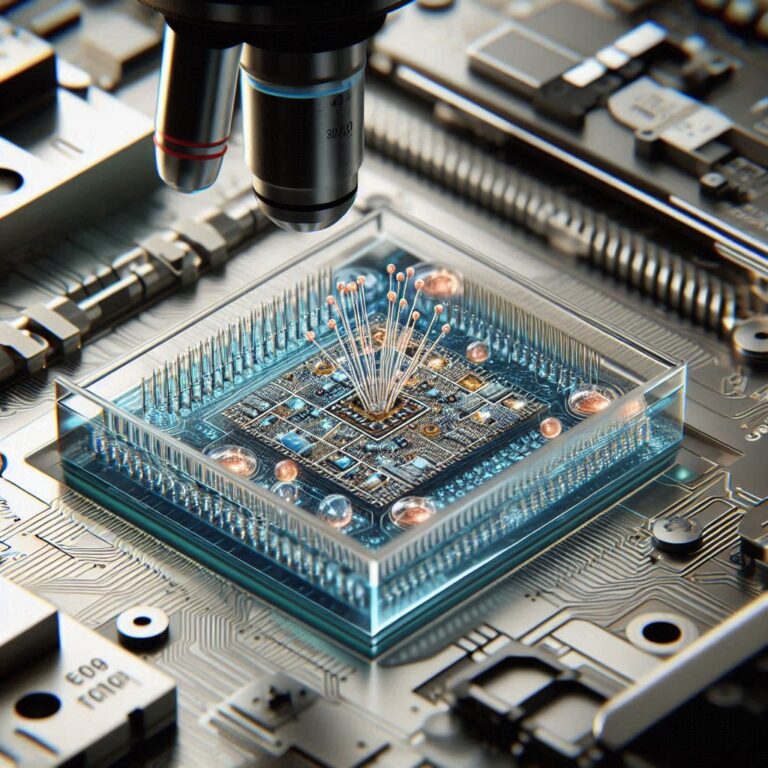The Invention of Radar
The invention of Radar has been an important technological advancement in the 20th century, Radar, an acronym for Radio Detection and Ranging, works on the principle of electromagnetism that uses radio waves to detect the presence, direction, distance, and speed of objects. It operates by emitting radio waves, a form of electromagnetic radiation from an antenna, these waves travel at the speed of light until they encounter an object. When radio waves hit an object, part of the signal is reflected back to the radar system.
By measuring the time it takes for the waves to return and analyzing the frequency shift caused by the Doppler effect (resulting from the object’s motion), radar systems can calculate the distance and speed of the detected object.
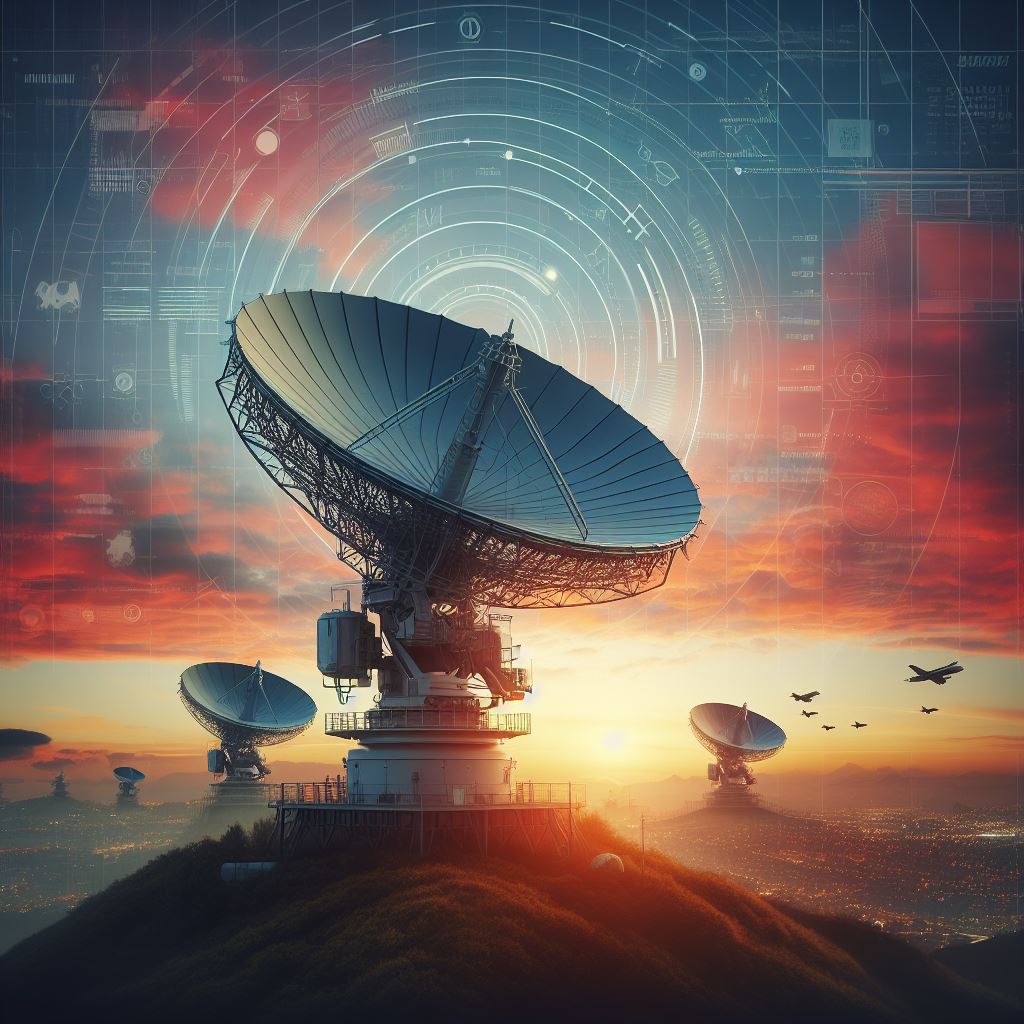
The foundation of radar technology lies in electromagnetism, as radio waves are a type of electromagnetic radiation. Understanding the behavior of electromagnetic waves and their interaction with objects enables radar systems to perform critical functions in various fields, from military and aviation to weather forecasting and navigation.
This pioneering technology has found extensive applications in navigation, aviation, meteorology, and various scientific fields. The inception and development of radar trace back to the early 20th century.
Historical Overview
The genesis of radar can be attributed to the pioneering work of Scottish physicist Sir Robert Watson-Watt and his team in the 1920s. While initially investigating the use of radio waves to detect thunderstorms, they stumbled upon an unforeseen revelation—the ability of radio waves to bounce off objects and return a signal. This serendipitous discovery laid the foundation for radar technology.
Doppler Effect by Christian Doppler (18420)
The Doppler effect refers to the change in frequency or wavelength of a wave when there is relative motion between the source of the wave and the observer. This phenomenon occurs with various types of waves, such as sound waves, light waves, and radio waves, and it’s named after the Austrian physicist Christian Doppler, who first proposed this principle in 1842.
Understanding the Concept:
Imagine standing on a sidewalk while an ambulance with its siren on approaches you and then moves away. As the ambulance approaches, the sound waves it emits are compressed due to the motion, resulting in a higher frequency that you perceive as a higher pitch. This shift to a higher frequency is the result of the waves being closer together as the source moves closer to you.
Conversely, as the ambulance moves away, the sound waves are stretched out, causing a decrease in frequency that you perceive as a lower pitch. This change in frequency occurs because the waves are now farther apart as the source moves away from you.
Key Points:
Approaching Source: When the source of the waves moves closer to the observer, the observed frequency increases. This is called a “blue shift” for light waves and a “higher pitch” for sound waves.
Receding Source: When the source moves away from the observer, the observed frequency decreases. This is referred to as a “red shift” for light waves and a “lower pitch” for sound waves.
Late 1800s: Heinrich Hertz
The story of radar’s origins takes us back to the late 19th century and the brilliance of a German physicist named Heinrich Hertz. Born in Hamburg in 1857, Hertz wasn’t just any scientist; he was a pioneer in the field of electromagnetism. Long before the invention of radio or radar, scientists like James Clerk Maxwell theorized the existence of electromagnetic waves, a mysterious unseen force capable of carrying energy through space.
Hertz: The Man Behind the Spark
Hertz wasn’t content with just theory. He embarked on a series of groundbreaking experiments between 1887 and 1888 with the ambitious goal of proving Maxwell’s theories. His lab setup was ingenious – a spark gap transmitter that generated high-frequency electrical sparks and a loop antenna as a receiver. When the spark gap discharged, it created a brief burst of electromagnetic waves. By carefully measuring the distance between the transmitter and receiver and observing the spark created in the receiver antenna, Hertz provided the world with concrete evidence of electromagnetic waves.
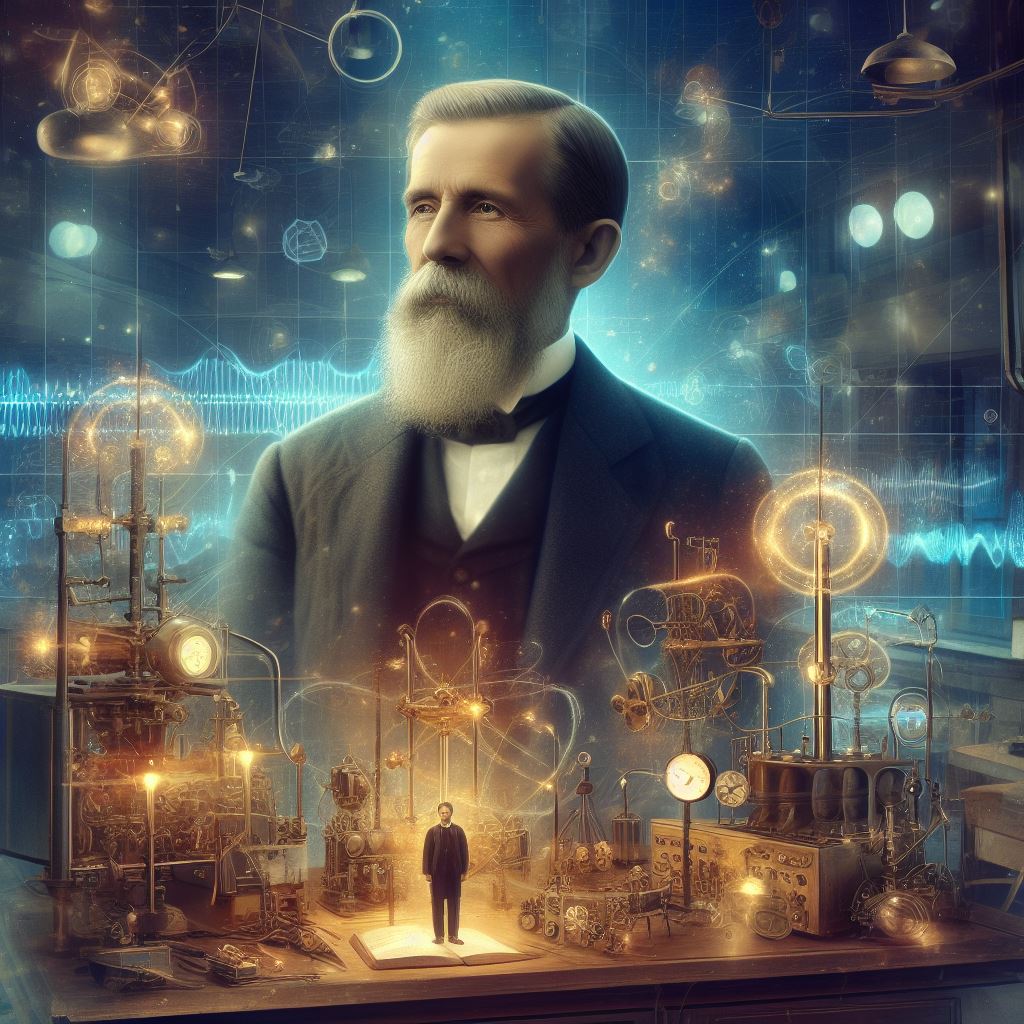
The Spark That Ignited a Technological Revolution
Hertz’s experiments were a pivotal moment in scientific history. They not only confirmed Maxwell’s theories but also opened a new chapter in the exploration of the electromagnetic spectrum. His work laid the foundation for future advancements in radio communication, radar technology, and countless other applications that rely on electromagnetic waves.
Historical Context and Further Reading:
Hertz’s research coincided with a period of significant scientific progress. Here are some interesting historical tidbits:
- The Telephone (1876): Just a decade before Hertz’s experiments, Alexander Graham Bell had revolutionized communication with the invention of the telephone.
- The Second Industrial Revolution: The late 19th century witnessed rapid advancements in various fields, including electricity, steel production, and manufacturing.
Exploring Hertz’s Legacy:
To delve deeper into Hertz’s work and its impact, you can explore these high-authority resources:
- IEEE History Center: Heinrich Hertz:
- Nobel Prize Website: While Hertz didn’t receive a Nobel Prize (established in 1901), the Nobel Prize website provides a historical timeline of physics laureates, placing Hertz’s work in context with other scientific discoveries of the era.
- Scientific American: The Experiments of Heinrich Hertz: This article on the Scientific American website delves into the specifics of Hertz’s experiments and their significance.
Early 1900s: The Spark Gap and Early Detection
The Year: 1904. The Wright Brothers had just achieved their historic first powered flight, and the world was abuzz with the possibilities of new technologies. It was in this context that a German inventor named Christian Hülsmeyer (sometimes spelled Huelsmeyer) made a significant contribution to the nascent field of radar.
Hülsmeyer’s Background: Born in 1881, Hülsmeyer wasn’t your typical inventor. While details about his early life are scarce, historical records suggest he may have been an entrepreneur or businessman with an interest in applied science. This background likely fueled his vision for a practical solution to a pressing problem – ship collisions in foggy conditions.
The “Telemobiloskop”: Driven by this concern, Hülsmeyer developed the “Telemobiloskop,” which translates to “distance viewer” in German. This pioneering device, patented in 1904, is considered the first rudimentary radar system.
How it Worked: The “Telemobiloskop” was a relatively simple system compared to modern radar. It employed a spark-gap transmitter that generated short bursts of radio waves. These waves were then directed towards the horizon using a rotating antenna. When the radio waves encountered a solid object, like a ship, they were partially reflected back towards the receiver.
Limitations and Legacy: While the “Telemobiloskop” could detect the presence of nearby objects, it couldn’t determine their exact distance. Additionally, the spark-gap technology limited its range and accuracy. Despite these limitations, Hülsmeyer’s invention laid the groundwork for future radar development. His work received renewed recognition in the mid-20th century, solidifying his place as a pioneer in the field.
Further Reading:
- German Patent Office: While the original German patent for the “Telemobiloskop” might be difficult to access directly, the German Patent Office website offers a searchable database of historical patents.
- IEEE History Center: The Institute of Electrical and Electronics Engineers (IEEE) maintains a History Center website that provides valuable resources on the history of technology, potentially including information on Hülsmeyer and his invention.
- “Christian Huelsmeyer – Radar”: This article on the Radar World website offers a concise overview of Hülsmeyer’s invention and its significance.
1908: Nikola Tesla and the Visionary Glimpse of Radar
The Year: 1908. Nikola Tesla, a prolific inventor already renowned for his work on alternating current (AC) electricity, presented a theoretical concept that would foreshadow the principles of radar.
Tesla’s Vision: In a lecture delivered to the American Institute of Electrical Engineers, Tesla described a system that could utilize reflected radio waves to detect ships and other objects. His proposed system involved a high-powered transmitter that would emit radio waves, with a receiver set up to detect any reflections. While Tesla’s ideas lacked the specifics of a working prototype, they clearly outlined the fundamental principle of radar technology: using reflected radio waves to determine the presence and location of objects.
A Spark of Inspiration: While Tesla’s 1908 proposal didn’t translate into a practical radar system at the time, it served as a crucial piece of inspiration for future inventors. His conceptual framework laid the foundation for the development of radar in the decades to come.
Tesla’s Legacy: Today, Nikola Tesla is recognized as a visionary figure who made significant contributions to various fields, including radio, robotics, and wireless communication. His 1908 proposal on reflected radio waves stands as a testament to his forward-thinking approach and its lasting impact on the development of radar technology.
Further Reading:
- Nikola Tesla Museum: The Nikola Tesla Museum in Belgrade, Serbia offers a wealth of information about Tesla’s life, inventions, and legacy. Their website might have resources related to his 1908 lecture and its connection to radar.
- “Tesla coil and radar“: This article on the ScienceDirect website explores the connection between Tesla’s work on Tesla coils and the development of radar technology.
- PBS – American Experience – Nikola Tesla: This documentary by PBS.
1920s and 1930s: Technological Advancements
The 1920s witnessed a pivotal step in radar development with the emergence of the pulse radar system. This innovation can be attributed to the German physicist, Christian Huelsenbeck.
Who was Christian Huelsenbeck?
While not as widely known as other figures in radar history, Huelsenbeck played a crucial role. Details about his life are somewhat limited, but historical records indicate he was a physicist with an interest in radio technology.
The Pulse Radar Patent:
In 1920, Huelsenbeck received a patent for his invention, a pulse radar system. This design differed significantly from earlier efforts like the Telemobiloskop, which relied on continuous radio waves. Here’s how Huelsenbeck’s pulse radar system worked:
- Short Bursts: The system transmitted short bursts of radio waves instead of a continuous signal.
- Echo Detection: The system then analyzed the time it took for these radio waves to reflect off an object and return to the receiver.
- Distance Calculation: By measuring the time delay, the system could calculate the distance to the object using the speed of light.
Impact and Significance:
Huelsenbeck’s pulse radar system marked a significant advancement over previous methods. It offered a more precise way to determine the distance to objects, paving the way for future developments in radar technology.
Further Reading:
- German Patent Office: While the original German patent (DE389774) may be difficult to access directly, resources like the European Patent Office’s Espacenet database can offer historical information on patents like Huelsenbeck’s.
- IEEE Global History Network: The Institute of Electrical and Electronics Engineers (IEEE) Global History Network provides a wealth of information on the history of technology, potentially including resources on early radar pioneers like Huelsenbeck.
1930s: A Race Against Time – The Global Rush for Radar Development
The 1930s witnessed an international race to develop and refine radar technology, primarily driven by military applications. Here’s a closer look at the key players:
- The United States: The U.S. Navy Department established a research group focusing on radar development in 1922. By the 1930s, significant advancements were made, culminating in the deployment of radar systems for coastal defense in the late 1930s.
- The United Kingdom: Sir Robert Watson-Watt, a Scottish physicist, played a crucial role in the UK’s radar development. His team successfully demonstrated a radar system capable of detecting aircraft in 1935, proving its potential for air defense. This breakthrough, known as Chain Home, became a vital asset for the UK during World War II.
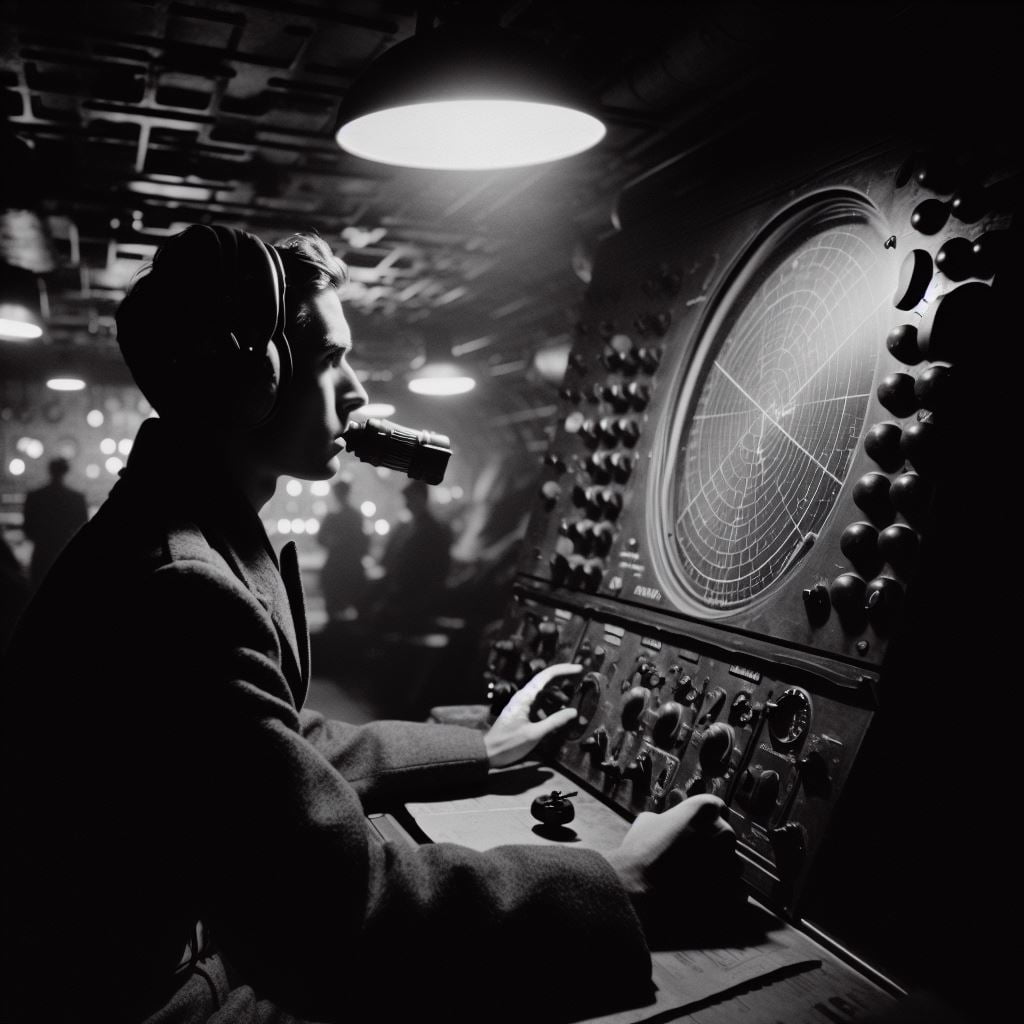
- Germany and France: Both Germany and France also actively pursued radar research in the 1930s. Germany developed radar systems for air defense and naval applications, while France focused on coastal defense systems.
Historical Context:
The rise of totalitarian regimes in Europe and growing tensions in the 1930s fueled the urgency for military innovation. Radar technology, with its potential for early warning and detection, became a critical area of research for many countries.
A Turning Point:
The intense research and development efforts in the 1930s laid the groundwork for the widespread use of radar during World War II. This global race for radar technology significantly impacted the course of the war, shaping air defense strategies, naval warfare, and ultimately, the outcome of the conflict.
Further Reading:
- “The History of Radar” by Louis N. Ridenour (1947): This classic text by a key figure in American radar development offers a comprehensive look at the early history of radar, including the international race during the 1930s.
- “Radar in World War II” by Alfred Price (1995): This book delves deeper into the specific role of radar during the war, exploring its impact on various aspects of the conflict.
- National WWII Museum: The National WWII Museum’s website offers educational resources on the technologies used during the war, including radar.
World War II: A Catalyst for Development
The 1930s witnessed a flurry of activity in the development of radar technology, driven by a confluence of factors:
- Technological Advancements: The groundwork laid by pioneers like Hertz and Hülsmeyer provided a foundation for further exploration. The invention of the cathode-ray tube (CRT) in the early 20th century offered a visual display for radar signals, a crucial step toward practical applications.
- Military Tensions: The rising tensions in Europe leading up to World War II spurred significant investment in military technologies. Several countries, including the United States, United Kingdom, Germany, and France, recognized the potential of radar for air defense and other military applications.
Here are some key milestones from this period:
- 1930s: Sir Robert Watson-Watt and his team in the UK take center stage. Watson-Watt, a Scottish physicist and meteorologist, was the driving force behind the development of radar in the UK. He recognized the potential of radio waves for object detection and, along with his team, successfully demonstrated a radar system capable of detecting aircraft at a distance in 1935. This breakthrough, known as Chain Home, played a pivotal role in Britain’s air defense during World War II.
- 1939: The Birth of RADAR: The United States Navy officially adopted the term “RADAR” (RAdio Detection And Ranging) in 1939. This signifies the growing recognition and potential of this technology.
- 1939: The Cavity Magnetron Revolution: A critical development arrives with the invention of the cavity magnetron by British physicists John Randall and Harry Boot in 1939. Previously, radar systems relied on bulky and less efficient magnetrons. The cavity magnetron, however, was a compact and powerful source of microwave radiation, paving the way for smaller and more practical radar systems. An in-depth explanation of the cavity magnetron’s role in radar development can be found in this study published by the Institute of Electrical and Electronics Engineers (IEEE)
World War II became a proving ground for radar technology. Radar systems played a crucial role in:
- Air Defense: Early warning systems like Chain Home in the UK allowed for the detection of incoming enemy aircraft, providing valuable time for air defense measures.
- Navigation: Radar systems assisted ships and aircraft in navigating during harsh weather conditions and nighttime, improving safety and operational efficiency.
- Submarine Detection: Radar technology played a vital role in detecting and tracking enemy submarines, contributing significantly to the Allied victory in the Battle of the Atlantic.
1940s-1950s: Radar Takes to the Skies and Beyond
- Air Traffic Control (ATC): Before radar, air traffic management relied on visual observation and rudimentary radio communication. The introduction of radar systems in the 1940s revolutionized air traffic control, allowing for real-time monitoring of aircraft positions, and significantly improving safety and efficiency in airspace management.

- Weather Forecasting: Early radar systems were found to be sensitive to variations in water vapor in the atmosphere. By analyzing radar echoes, scientists could detect and track weather patterns, leading to more accurate weather forecasting and early warnings for severe weather events.
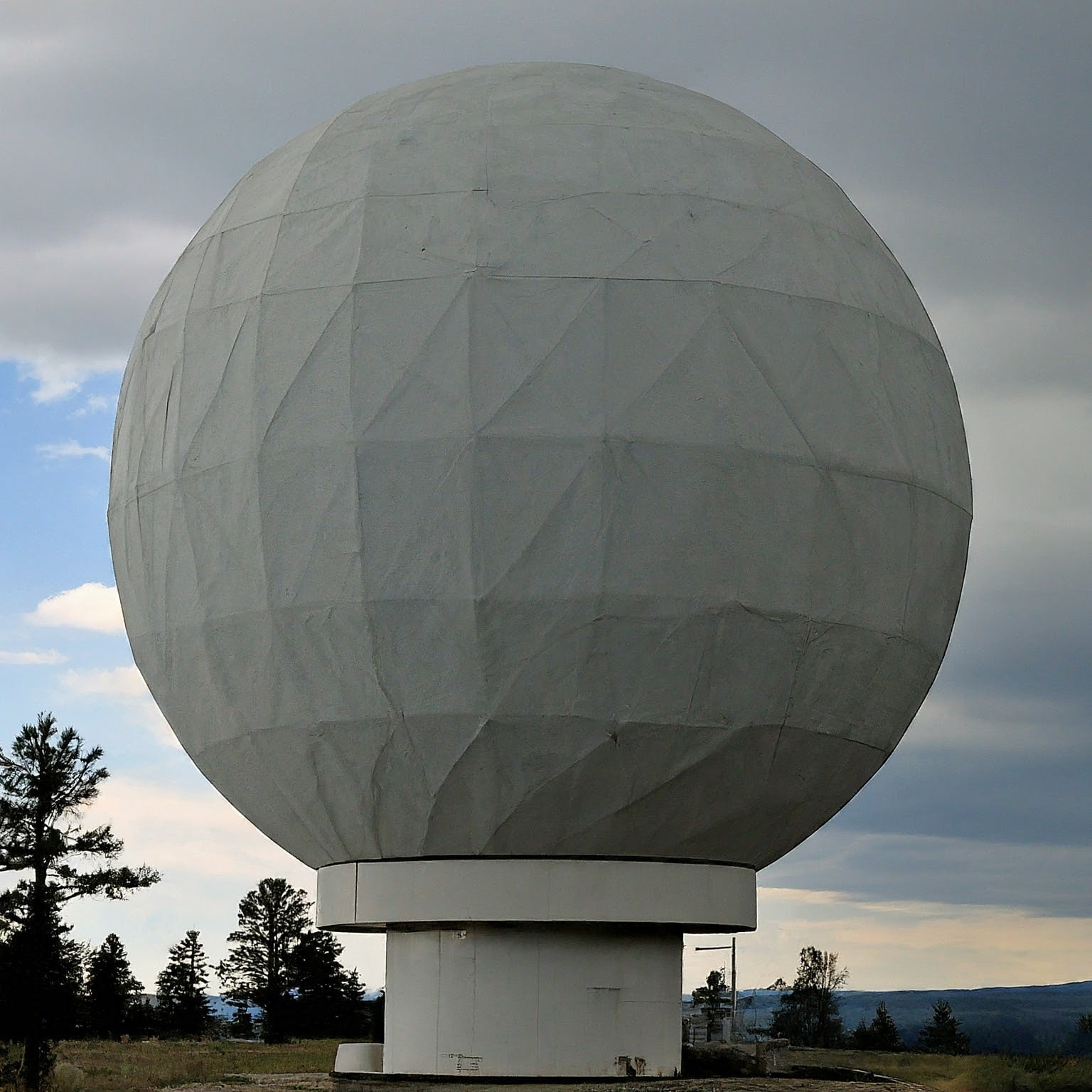
- Pioneering Space Exploration: In the early days of space exploration, radar played a crucial role in tracking launched satellites and spacecraft. Ground-based radar systems provided valuable data on the trajectory and position of these objects, paving the way for further exploration of the cosmos.
Studies and Historical References:
- A historical perspective on the development of air traffic control: This website by the Federal Aviation Administration (FAA) offers a historical timeline of air traffic control advancements, including the impact of radar technology.
- The Role of Radar in Weather Forecasting: A 1946 study published in the Journal of Meteorology (“The History of Weather Forecasting”) by H. Wexler, discusses the early use of radar for weather observation and its potential for future advancements. You can find similar academic papers through online databases like JSTOR or ScienceDirect.
High Authority Websites:
- National Oceanic and Atmospheric Administration (NOAA) – Radar for Weather Observation: This NOAA website provides a detailed explanation of how radar is used for weather forecasting and the different types of radar systems employed.
- American Meteorological Society (AMS) – A Century of Weather Radar Innovation: The AMS website offers a historical perspective on the development of weather radar and its impact on meteorology.
1970s: Ground-Penetrating Radar (GPR) Sees Beneath the Surface
- Unearthing the Past and Present: Developed in the 1970s, Ground-Penetrating Radar (GPR) uses short bursts of radio waves to image objects buried underground. This technology has revolutionized archaeology, allowing researchers to locate and map buried structures, artifacts, and even ancient settlements. GPR also finds applications in various fields like locating buried utilities, inspecting infrastructure, and assessing environmental hazards.
Websites:
- The Geological Society of America (GSA) – Ground Penetrating Radar: This GSA webpage provides a comprehensive introduction to GPR technology and its applications in various geological and environmental studies.
- National Institute of Standards and Technology (NIST) – GPR for Law Enforcement: This NIST website explores the use of GPR by law enforcement agencies for locating buried evidence and facilitating search and rescue operations.
Late 20th Century: Advanced Radar Systems Take Shape
- Doppler Radar Measures Speed and Direction: Doppler radar, developed in the late 20th century, utilizes the Doppler effect to measure the speed and direction of objects. This technology has revolutionized weather forecasting by providing detailed information about wind speed and direction within storms, leading to more accurate weather predictions. Doppler radar is also used in various applications like traffic monitoring and military defense systems.
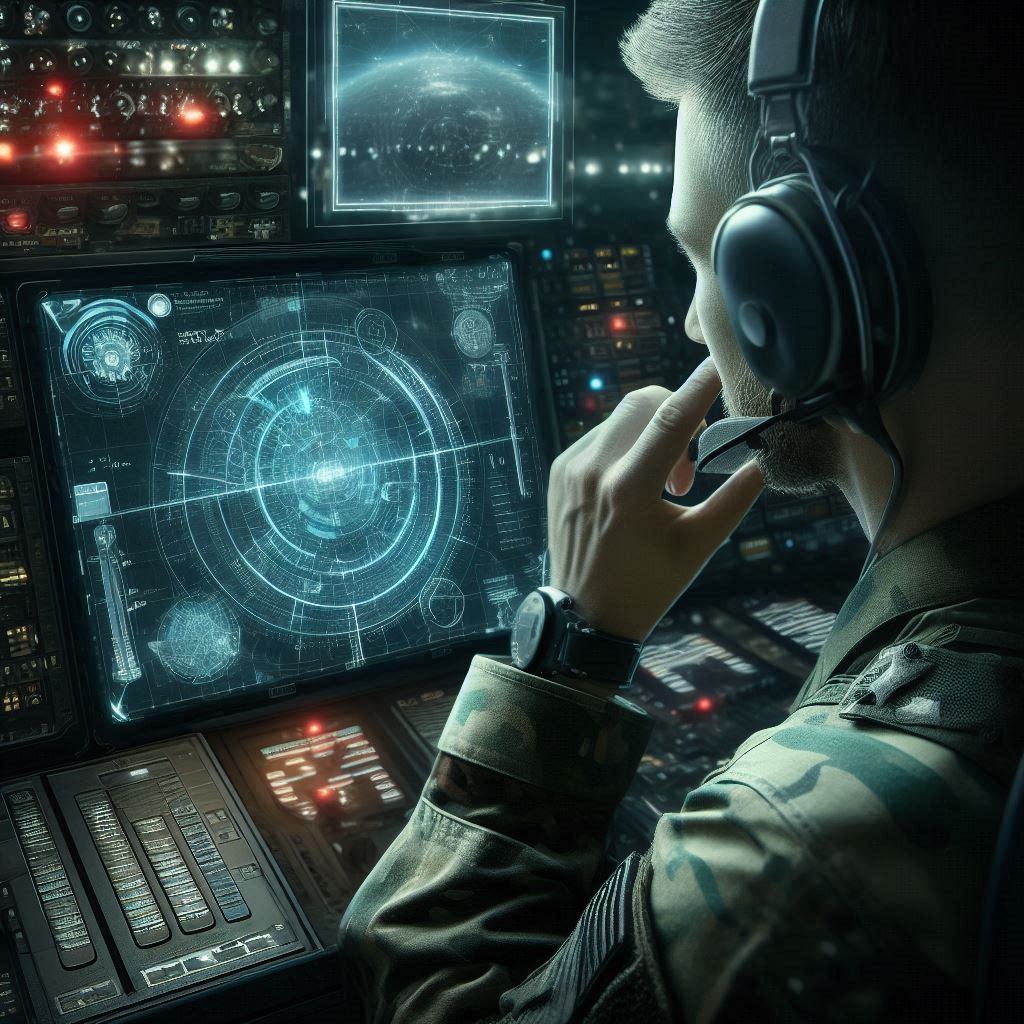
Websites:
- National Weather Service (NWS) – Doppler Radar FAQ: This National Weather Service webpage provides a clear explanation of Doppler radar technology and its role in weather forecasting.
- IEEE Spectrum – A Half-Century of Progress in Radar Technology (1995): This article from a 1995 issue of IEEE Spectrum magazine offers a historical overview of radar advancements and explores the development of Doppler radar technology.
Synthetic Aperture Radar (SAR) Creates High-Resolution Images
- Seeing the World in High Definition: Synthetic Aperture Radar (SAR) is a sophisticated radar system that can create high-resolution images of the Earth
- Seeing the World in High Definition: Synthetic Aperture Radar (SAR) is a sophisticated radar system that can create high-resolution images of the Earth’s surface, even through clouds or darkness. Unlike traditional radar that uses a single antenna, SAR effectively creates a larger virtual antenna by transmitting and receiving signals from a moving platform like an airplane or satellite. This technique allows for incredibly detailed images with applications in various fields:
-
- Earth Observation: SAR can be used to map land cover changes, monitor deforestation, and detect natural disasters like floods and earthquakes.
- Resource Management: SAR data helps monitor and manage natural resources, such as tracking oil spills, mapping forest cover, and identifying potential mineral deposits.
- Military Applications: SAR technology plays a crucial role in military reconnaissance, providing high-resolution images of terrain and potential targets.
Websites:
- European Space Agency (ESA) – Synthetic Aperture Radar (SAR): This ESA webpage offers a comprehensive overview of SAR technology, its principles, and applications in various fields.
- NASA Earth Observatory – Seeing Through the Clouds with Radar: This NASA webpage explores the benefits of using SAR for Earth observation and its ability to image through clouds and darkness.
.
21st Century and Beyond: A Future Full of Potential
The 21st century has seen radar technology continue its remarkable journey, shrinking in size, growing in sophistication, and venturing into exciting new frontiers. Here’s a glimpse into the ongoing developments and future potential of radar:
Miniaturization and Integration:
- Self-Driving Cars and Advanced Driver-Assistance Systems (ADAS): Radar plays a crucial role in the development of autonomous vehicles. Miniaturized radar sensors are used to detect and track surrounding objects, providing real-time data for navigation, collision avoidance, and automated driving functions.
- Advanced Driver-Assistance Systems (ADAS): Modern cars increasingly incorporate radar technology in ADAS features like adaptive cruise control and blind-spot monitoring, enhancing safety and driver awareness.
- Wearable Technology and Medical Imaging: Research is exploring the potential of miniaturized radar for wearable health monitors and medical imaging applications. For instance, radar-based sensors could be used to track vital signs or monitor movement patterns for healthcare purposes.
Website:
- IEEE Spectrum – Radar in the Fast Lane: Self-Driving Cars: This article in IEEE Spectrum explores the specific applications of radar technology in self-driving cars and its role in perception and navigation.
Environmental Monitoring and Resource Management:
- Unveiling the Invisible: Ground Penetrating Radar (GPR) and Environmental Applications: GPR technology is being increasingly used for environmental monitoring applications like detecting buried waste and pollutants, assessing the integrity of underground infrastructure, and mapping geological formations.
- Space-Based Radar: A Global Perspective: Several space agencies are developing space-based radar systems for various applications:
- Planetary Exploration: Radar instruments on spacecraft can penetrate the surface of planets and moons, revealing details about their internal structure and potential for water ice deposits.
- Monitoring Earth’s Environment: Space-based radar systems offer a global perspective on Earth’s changing environment. They can be used to track deforestation, monitor sea levels, and measure changes in polar ice caps.
Websites:
- U.S. Geological Survey (USGS) – Ground Penetrating Radar (GPR): This USGS webpage provides an overview of GPR technology and its applications in various environmental investigations.
- European Space Agency (ESA) – Earth Observation Missions: This ESA webpage showcases various Earth observation missions using radar technology, highlighting its role in monitoring our planet.
Studies and Ongoing Research:
- Journal of Applied Geophysics: Special Issue on Advances in Ground Penetrating Radar (GPR): This special issue of the Journal of Applied Geophysics explores recent advancements in GPR technology and its expanding applications in various fields.
- IEEE Transactions on Geoscience and Remote Sensing: This academic journal publishes research papers on advancements in radar technology for remote sensing applications, including Earth observation and planetary exploration.
Operational Components of Radar Systems:
Transmitter:
The transmitter is the heart of the radar system. It generates and emits radio waves or microwaves at a specific frequency determined by the radar’s design and purpose. These waves propagate outward into the surrounding space.
Antenna:
An antenna is responsible for directing the emitted waves towards the desired target area. It acts as both a transmitter and a receiver. By focusing the waves in a particular direction, the antenna ensures maximum coverage and precision in detecting objects.
Receiver:
Once the emitted waves encounter objects in their path, they reflect back to the radar system. The receiver captures these reflected signals. It’s designed to process these incoming signals, extracting valuable information about the distance, size, shape, and movement of the objects.
Display System:
The received data undergoes sophisticated analysis within the radar’s display system. This analysis involves interpreting the time taken for the emitted waves to return after hitting an object. By calculating this time delay, the radar determines the distance to the target.
Operational Mechanism:
Radar operates by emitting short bursts or pulses of electromagnetic waves. These pulses travel at the speed of light and bounce off any object within their range. When these waves encounter an object, they reflect back towards the radar system.
The receiver captures these reflected signals, which contain information about the distance and direction of the object. By analyzing the time it takes for the waves to return, the radar precisely calculates the distance to the object. This calculation relies on the speed of light and the time lapse between emission and reception.
Additionally, Doppler radar is a specialized form of radar that goes beyond distance measurement. It assesses an object’s speed by measuring changes in the frequency of the reflected waves caused by the object’s motion. This technology is extensively used in various applications, from predicting weather patterns by tracking the movement of rain or snow to detecting the speed of moving vehicles or aircraft.
The integration of these components and principles allows radar systems to provide crucial information about the presence, location, trajectory, and speed of objects within their range, making them indispensable tools across multiple industries.
Diverse Applications of Radar
Since its inception, radar technology has transcended military use and found widespread applications:
Aviation: Essential for air traffic control, collision avoidance, and weather monitoring.
Navigation: Aids in maritime navigation, providing accurate positioning and collision prevention.
Meteorology: Facilitates weather forecasting by detecting precipitation, storm movements, and atmospheric conditions.
Scientific Research: Used in astronomy, geology, and archaeology for remote sensing and exploration.
FAQ
Who is credited with the invention of radar?
Radar technology emerged from parallel discoveries in several countries during the 1930s. However, Scottish engineer Sir Robert Watson-Watt is often credited as the “father of radar” for demonstrating its practical military use in 1935 for aircraft detection in Britain.
What does the word “RADAR” stand for?
“RADAR” is an acronym for Radio Detection and Ranging. It describes the system’s core function: using radio waves to detect the presence, direction, distance, and speed of objects.
How does radar work in simple terms?
Radar works by sending out radio waves, which bounce off objects and return to the radar receiver. By measuring the time it takes for the echo to return, the system calculates the object’s distance, direction, and sometimes even its speed.
What role did radar play during World War II?
Radar was a game-changer in World War II. Britain’s early warning radar network, called the Chain Home system, gave the Royal Air Force critical advantages during the Battle of Britain by detecting incoming German aircraft before they reached targets.
What were the first non-military uses of radar?
After WWII, radar found peaceful applications in aviation (air traffic control), weather monitoring, and maritime navigation. Today, Doppler radar is essential in forecasting storms, while marine radars prevent collisions at sea.
What is the operational mechanism of radar?
The radar system operates in four main steps: Transmission – The radar antenna sends out a burst of radio waves. Propagation – The waves travel through the atmosphere. Reflection – If the waves hit an object, they bounce back (echo). Reception & Processing – The radar antenna receives the echoes, and signal processors calculate distance, location, and speed.
How has radar technology evolved since its invention?
Modern radar systems use Doppler effects, phased array antennas, and digital signal processing. These advancements make them faster, more accurate, and versatile for uses such as autonomous vehicles, planetary exploration, missile defense, and space surveillance.
Is radar still relevant in today’s technology era?
Yes, radar remains indispensable. From air defense systems and civil aviation safety to weather forecasting and self-driving cars, radar continues to adapt to modern needs. Its reliability in detecting and tracking objects ensures it will remain vital in both civilian and military domains.
What are the limitations of radar technology?
While radar is powerful, it has certain limitations. Small or stealthy objects may reflect very little signal, making them harder to detect. Weather conditions such as heavy rain or storms can create “clutter” and reduce accuracy. Additionally, modern stealth aircraft and ships are designed with materials and shapes that minimize radar reflections, challenging traditional radar systems.
Conclusion
From its humble beginnings as a concept in the late 19th century, radar has transformed into a powerful tool shaping various scientific and technological fields. Its journey is a testament to human ingenuity and the relentless pursuit of innovation.
From Battleships to Self-Driving Cars: Radar’s impact extends far beyond its initial military applications. It revolutionized air traffic control, weather forecasting, and even early space exploration. Today, miniaturized radar sensors are driving the development of self-driving cars and advanced driver-assistance systems.
A Window into the Invisible: GPR technology allows us to peer beneath the Earth’s surface, uncovering archaeological treasures and monitoring environmental threats. And with space-based radar systems in development, we gain a broader perspective of our planet and the mysteries of distant celestial bodies.
The Future Unfolds: The miniaturization of radar components and ongoing research efforts promise even more exciting advancements. Who knows, radar technology might one day play a role in medical imaging, revolutionizing healthcare or even aiding in search and rescue operations on other planets.
Radar’s legacy is one of continuous evolution and expanding potential. As we look towards the future, this technology undoubtedly holds the key to unlocking new discoveries and shaping a world where “seeing” goes beyond the limitations of the human eye.
Find more articles in my other blogs:
- The Invention of Television
- Invention of Radio
- Invention of Compass
- Invention of Paper
- Invention of the Printing Press

